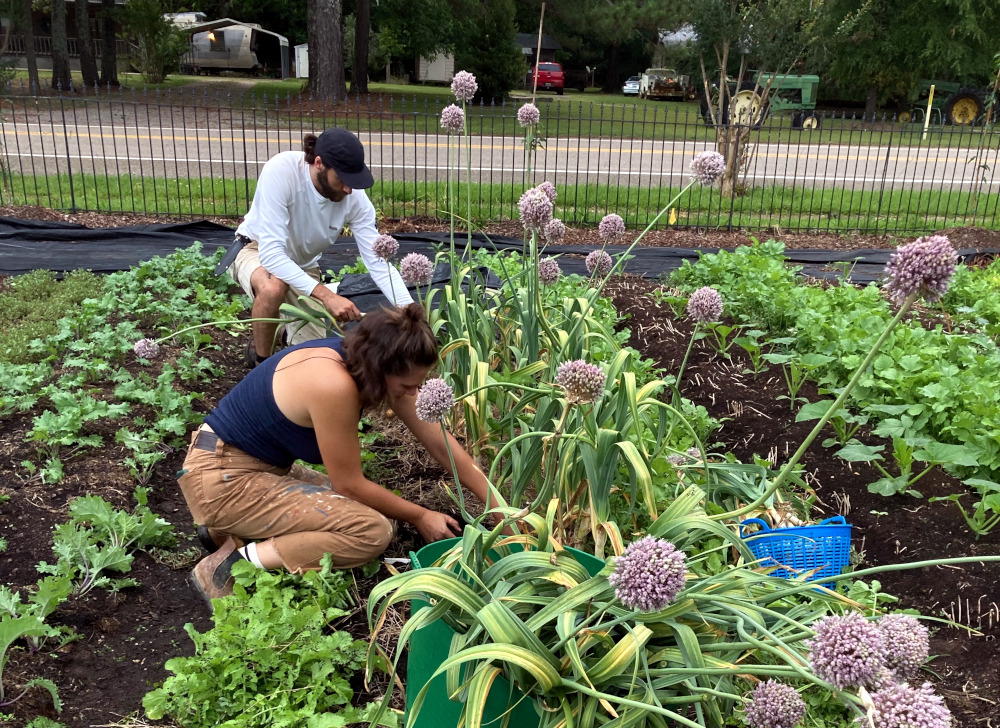Rural Studio Immersion Program Enriching Students, Reviving West Alabama’s Black Belt
7 min read
Sustainable Brands – Latest News –
Rural Studio at Auburn
University is one of nine organizations selected as
part of Shaw Industries’ sustain[HUMAN]ability® Leadership Recognition
Program, which recognizes a diverse slate of organizations that
are innovating to support the wellbeing of people and the planet.
Shaw’s Troy Virgo
recently interviewed Rusty Smith — Associate Director of Rural Studio at
Auburn University School of Architecture, Planning & Landscape Architecture
— to learn more about how this venerable institution focused on community need
and incorporated ‘healthier materials’
thinking,
giving architecture students a hands-on educational experience while assisting
under-resourced communities of West Alabama’s Black
Belt.
TV: Tell us about Rural Studio.
RS: Rural Studio is an off-campus part of the architecture program housed at
Auburn’s School of Architecture, Landscape Architecture and Planning. It’s
located about three hours from campus — in a region that is known as the Black
Belt. Rural Studio is place-based, focused on the work and the needs of our
neighbors in that small service area. Our students have designed and built over
200 projects in our five-county service area.
Rural Studio is an immersion-based program in which students come and live and
work with us anywhere from one semester of their five years of undergraduate
study, to up to two years — or maybe even more, depending on when they come to
us and what projects they might be engaged in. The program was founded on a
handful of simple premises: The first is that Rural Studio believes that the
best way to learn how to do things is by doing it. So, we’re extraordinarily
hands on. Through that engagement and experience-based activity of designing and
building real projects — for real people, with real budgets, on real sites, and
hopefully, with real impacts — the students begin to transfer what they’ve
learned on campus, and through that engagement and experience, into what we just
refer to as ‘know-how.’
As part of the students’ work with us, and as part of their architectural
education, they both design and build all kinds of community infrastructure —
everything from single-family houses to much larger projects like fire stations,
town halls, libraries; lots of parks and recreation work, healthcare work, and
educational work. You name it. We’ve been around almost 30 years; and over that
period of time, we’ve had more than 1,200 students come through the program.
TV: Can you please talk a little bit about the community that Rural Studio works in?
RS: Our work happens in a place that’s considered to be persistently
impoverished — a federal designation that simply means that 20 percent of the
community members have lived consistently and persistently in poverty for 30
years or more.
There are roughly 380 persistently impoverished counties in the United States,
and about 85 percent of those are rural. So, this problem of persistent poverty
is particularly rural in nature. What’s important to know about these counties
is they are historically, geographically, geologically and culturally different
from each other; but they all share a history of extraction where — for decades
and centuries, resources have literally been taken out of the ground and no
resources ever put back.
Working here is really complicated. We have learned that, besides just learning
how to do things by doing them — when you’re faced with complex and difficult
things that you don’t know how to do, it’s important to do them together.
We work with community partners, neighbors and stakeholders, as well as a lot of
other partners and consultants. We live and die through our partnerships. We
believe that access to good, healthy, dignified places to live and work is a
human right — and that folks have that right, whether they can afford it or not,
no matter what their circumstances are. As architects, we have a professional
responsibility. It’s not only an ethical or moral responsibility; but it’s a
professional responsibility, as well, to act when we see people in crisis.

Image credit: Rural Studio
TV: Can you share some of your projects?
RS: The very first project Rural Studio engaged in was a house for a couple
named Shepard and Alberta Bryant, who were living in a tough situation.
Some faculty in the architecture program at Auburn — Samuel Mockbee and
D.K. Ruth — saw a need in a community and decided to work with students to
address the challenge.
The fact that Rural Studio started with just one house is important, because we
are a housing- and food-first organization. One of the things that folks don’t
know about Rural Studio is that we’re really food-oriented. Our students live
and work on a working farm; and we produce about 50 percent of our own food.
Rural Studio is in a food
desert,
which most folks think are urban conditions; but a lot of persistently
impoverished places are food deserts, as well. If you get people adequately
housed and decently fed, you can then begin to address a lot of the other issues
that our communities and neighbors face.
We have also expanded over the last couple of decades to do a lot of larger
infrastructure projects, like the fire station. A group of students were working
on issues of housing affordability and realized that houses were burning down at
an inordinate rate. And it turns out that homeowner’s insurance is unobtainable
without fire protection. Without homeowner’s insurance, you can’t get a
mortgage. And without a mortgage, no matter what we do as architects, it’s never
going to make a home more affordable or attainable for one of our neighbors.
These issues of equitable access and affordability are not just brick-and-mortar
problems. There are these larger, systems-based problems, and you have to really
begin to address the whole system simultaneously. That’s what we try to do at
Rural Studio: Understand the system, reveal the invisible systems that these
complex situations exist within. It’s through that revealing of the system, and
potential changes in the system, you really can begin to move the needle a
little.
More details about our projects can be found on our
website — as well as information about a new effort,
our Front Porch Initiative. It helps
expand our footprint around the Southeast US — sharing the housing that our
students have designed and built; and all our technical knowledge about how to
deliver those homes in an affordable and efficient, high-performing way. We
share not only the obvious construction and inspection documents, but also
important workforce development program components, energy modeling and
monitoring, consideration of health outcomes and understanding how to finance
homes like these.

Image credit: Rural Studio
TV: Where do health and wellbeing and material health in particular fit into your priorities?
RS: Questions of why we are where we are, and the health and wellness focus
of the program, are nested together. It’s taken us a little bit of time to
figure it out, but the health and wellness of our community members is really
job number one. We didn’t have language around the social determinants of health
30 years ago. Now we understand the role that the environments that we live
in,
and the impact that they play on our health and wellness long term, far outweigh
the medical responses to our health and wellness outcome.
Historically, we’ve thought about health and wellness as disease prevention. But
now we know that housing is a fundamental component. Housing is
health.
Housing is medicine in some ways. Where we live is the single, by a factor of
10, strongest determinant of our long-term health.
Through the lens of the pandemic, we know that West Alabama has been
disproportionately impacted by COVID. It’s rural, poor, elderly, and by and
large, Black. If you look at a map of persistently impoverished counties versus
a map of the disproportionate impact of COVID, they almost map directly against
each other. Something we inherently knew 30 years ago has become crystal clear.
COVID is primarily a respiratory disease; and comorbidities of the respiratory
illnesses that exist in these communities come predominantly from the
substandard housing and the unhealthy
environments
that our community members often live in. This last year-and-a-half has really
been eye-opening, clarifying the role that building and housing and design play
relative to health and
wellness.
It’s become an explicit understanding now and is an important part of our work.
TV: What’s next for Rural Studio?
RS: We’re always looking over the horizon. We try not to invent anything;
all of our work comes right out of our community. But a lot of our work
continues to expand. Rural Studio would historically be recognized as an
outreach program — and outreach is important. We are better understanding that
our role as researchers in these spaces has become increasingly important. There
are things that we’ve learned from being in a place for 30 years that are
shareable and useful for others. We are starting to reckon with the fact that
we’re a think tank, because we do a lot of research. We’re also a ‘do tank’ — we
do a lot of applied research. And quite honestly, closing the gap between what
we know and what we do about it is important.
We are focused on housing affordability, issues of food sovereignty and food
security. There is a tremendous amount of work in building performance around
durability, resilience, energy efficiency, those sorts of things. And we are
tilting into a lot of work around wastewater and thinking about where our water
comes from, and where it goes. So, broadly we are beginning to address these
larger systemic issues of health and wellness, energy efficiency, durability and
resilience, and really thinking about how all of those things really work
together to make our communities more resilient and strengthen our community
networks. But we’re going to continue to do that by designing and building
buildings.
This article is part of a series of articles recognizing the second slate of
organizations to be honored by Shaw’s sustain[HUMAN]ability®
Leadership Recognition Program. The nine organizations selected for this year’s
recognition program have displayed tremendous effort and progress to support the
wellbeing of people and the planet amid the unprecedented challenges of 2020. To
read more about the other organizations recognized by Shaw, visit the landing
page for this blog series.
(c) Sustainable Brands – Latest News – Read entire story here.





